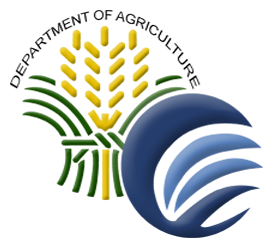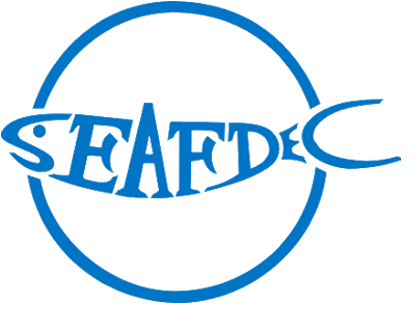Background & Situation Menu
Status and Trends in Fisheries and their Habitats Threats, root causes and barrier analysis Institutional, sectoral and policy context Stakeholder mapping and analysis Baseline analysis and gaps Known Areas of Critical Significance to the Life-Cycles of Fisheries Resources Priority Fisheries Refugia Areas




Establishment of Fisheries Refugia in Philippines:
Background and Situation Analysis to Support
Status and Trends in Fisheries and their Habitats
The Philippines is an archipelago with an Exclusive Economic Zone (EEZ) of 2,200,000 km2, of which 266,000 km2 is coastal (12%) and 1,934,000 km2 is oceanic (88%). Its shelf area covers 184,600 km2, with the coral reefs spanning 30,000 km2. Four major water bodies surround the archipelago: the Pacific Ocean in the east; the Celebes Sea in the south; the South China Sea (SCS) in the west; and the Philippine Sea in the north. Its bathymetric features are complex, consisting of various trenches, submarine ridges, deep-sea basins, island arcs, and plateaus. The marine environment of the Philippines is typically tropical, with relatively warm and less saline waters. Sea surface temperature varies between 24 and 30ºC, depending on the season but with mean values varying slightly between 27 and 28ºC. Mean annual range in the temperature of waters west of Luzon is around 5ºC. Salinity variations are relatively narrow; in the west-northwest part of the Philippines, sea surface salinity ranges from 33.7 to 34.6 psu.
The South China Sea (SCS) portion of the Philippines is geographically delimited by western Luzon, Palawan, and Mindoro Occidental, covering administrative regions I and III, and parts of Region IV and the National Capital Region (NCR). In dealing with aquatic resources in the area, especially fisheries, data constitute those obtained from the extensive coast and several embayments along western Luzon, including the Batanes Islands further north, as well as from western Palawan waters and the northern Mindoro coast. The SCS portion of the Philippines, excluding Batanes Islands, is around 50,000 km2, harbouring 16 cities and a total population of 26.3 million people. Population density in the same year stands at 472 persons/km2, with a finite growth rate of 2.1%. The area has a watershed spanning 27,500 km2, with five major rivers emptying into the SCS.
The fisheries sector of the Philippines is composed of culture and capture sub-sectors. Fishing is classified into municipal or commercial type, depending on the gross tonnage (GT) of the boats used. Municipal fishing includes activities not requiring the use of boats and those using boats not more than 3 GT. Commercial fishing involves the use of boats more than 3 GT. The Philippine Fisheries Code, enacted in 1998, prohibits commercial fishing within municipal waters whose designated offshore boundary is 15 km from the shoreline. This practically grants the right of access to nearshore fishing grounds exclusively to municipal fishers, whose population far exceeds that of commercial fishers. However, with this right comes greater accountability and regulatory control. Municipal fisherfolk secure licences to fish from local government units (LGUs), whereas commercial fishers obtain licences from the Bureau of Fisheries and Aquatic Resources (BFAR). The latter also issues licences to fish in international waters.
The SCS sub-region is among the most important fishing areas in the country as surveys indicate that the volume of fish catch from this area of the archipelago are thought to contribute up to 20 percent of total annual fisheries production in the Philippines. Both municipal and commercial fishing occur constantly during the first half of each year, although inclement weather associated with the southwest monsoon hinders commercial fishing operations during the second half of the year. Small-scale fishing at the municipal level persists throughout the year. Although records of landings from the SCS portion of the Philippines are scarce, the commercial sub-sector makes the greatest contribution to total marine landings from the SCS, mostly from activities in the West Palawan area. This reflects the relative efficiency and intensity of use of commercial fishing gears such as purse seines and ringnets. Municipal landings, however, are thought to surpass commercial landings in the West Luzon area (excluding Manila Bay), due to high levels of small-scale fishing pressure in that location.
The Philippine Statistics Authority generates the statistics for aquaculture, commercial, and municipal fisheries. Species-specific information for marine fish is limited to the top 30 species which are aggregated into eight groups under the ISSCAAP system and account for almost 68% of nationwide fish production. These groups are: Group 33 – slipmouth, threadfin bream, fusilier, goatfish, grouper, snapper, siganid, parrotfish, and porgies (~9% of landings); Group 34 – roundscad, big-eyed scad, crevalle, flying fish, cavalla, and mullet (~19 percent of landings); Group 35 – Indian sardine, fimbriated sardine, anchovy, round herring (~17 percent of landings); Group 36 - skipjack, frigate tuna, yellowfin tuna, eastern little tuna, spanish mackerel; Group 37 – Indian mackerel, Indo-Pacific mackerel, hairtail (~4 percent of landings); Group 42 – blue crab (~2 percent of landings); Group 45 – acetes shrimp (~0.7 percent of landings); and Group 57 – squid (~2.2 percent of landings).
Each of the above groups of species is targeted in Philippine waters of the SCS, with landings of these groups from SCS waters being higher than those from other parts of the Philippines. This is explained by the fact that the West Palawan area of the SCS is a major contributor to commercial fisheries production. At the national level and in terms of total production, purse seine is the most important commercial fishing gear, contributing 47 to 58% of the total marine fish landings, followed by ringnet (14 to 21%). In the case of municipal landings, gillnets account for 31 to 33% of the total, followed by line gears (hook and line, handline) with 18 to 24%. Recent surveys indicate that the relative contributions of purse seines and ringnets for the commercial sub-sector, and gillnets and hook and line for the municipal sub-sector from the SCS area, are increasing due to these gear types being better suited to the rough sea conditions and the hard ground relief on the SCS side of the archipelago.
The Philippines’ fisheries sector employs around a million people broken down into following: municipal 68%; aquaculture 26%; and commercial 6%. This constitutes 3 to 4% of the national labour force. Assuming that a typical family is comprised of 5 to 6 persons, then around 5 to 6 million people are directly dependent on fisheries. In addition, the fisheries sector indirectly provides employment to those engaged in fish distribution, marketing, processing, operation of ice plants and cold storage, and related industries such as net-making, boat-building, and boat-engine sales and repairs. Among the small-scale municipal sector is a high level dependence on fish and fishing to meet basic nutrition and livelihood needs. Given the high population of the Philippines, of around 99 million people, and an annual population growth rate of more than 2 percent, there is significant pressure to increase domestic fish production to meet demand.
Meeting the above mentioned need for increased production is challenged by the fact that nearly all nearshore fish stocks, particularly those within embayments, are overfished. These areas (e.g. coral reefs, shallow soft-bottom areas) are characterised by diminishing catch rates, increased units of most gears, decreasing sizes of fish, and a reduced number of fish species in the fishery. In highly exploited and overfished areas such as Manila Bay and Lingayen Gulf, the decline in demersal resources has led to an abundance of pelagic species. This has triggered shifts in target species and significant investment in alternative fishing gear and exploration of new fishing areas.
Coupled with this high level of fishing pressure and dependence on fisheries are threats to critical fisheries habitats. Key threats include: reclamation of nearshore areas for coastal infrastructure: sedimentation of coastal waters as a result of coastal development; wastewater effluent from highly populated coastal areas, industry, and shrimp and fish farming; and destructive fishing. Fisheries habitats in areas of Lingayen Gulf and Manila Bay are particularly threatened by high population densities and industrial development, whereas localised reclamation, coastal development and destructive fishing are more prevalent threats in areas of Palawan.
A detailed baseline assessment of fish stocks and habitats of regional, global, and transboundary significance in South China Sea waters of the Philippines was produced as part of fisheries component activities of the the UNEP/GEF South China Sea project[1]. This assessment presents available information and data relating the status and threats of important fish stocks, habitats and areas of importance in the maintenance of exploited fish stocks, and existing management regimes, which was used in the planning of national-level actions for the SEAFDEC/UNEP/GEF project entitled “Establishing and Operating a Regional System of Fisheries Refugia in the South China Sea and Gulf of Thailand” (Fisheries Refugia Project). It is anticipated that this assessment will be updated with new and additional information generated during the implementation of the Fisheries Refugia Project. It will also act as an important reference for determining the effectiveness of management interventions supported by the project.